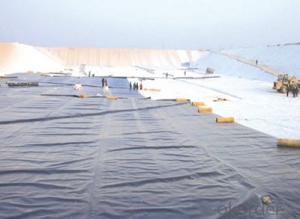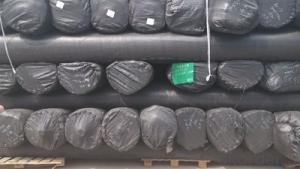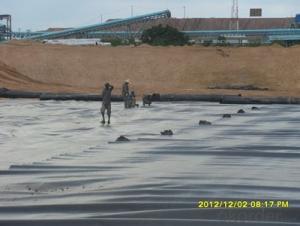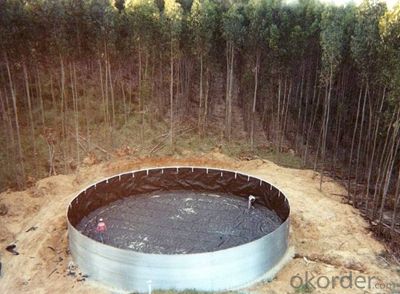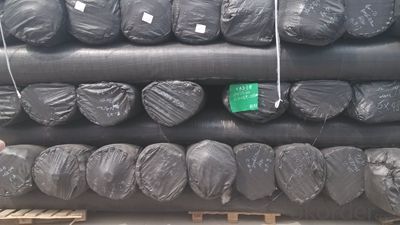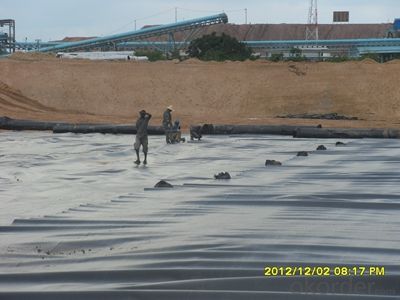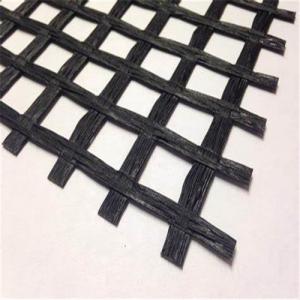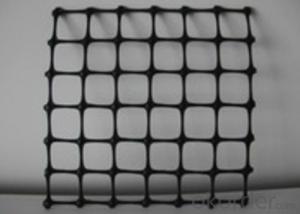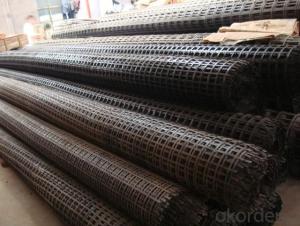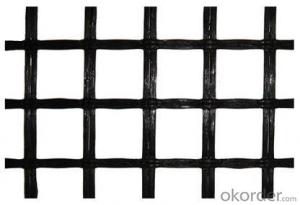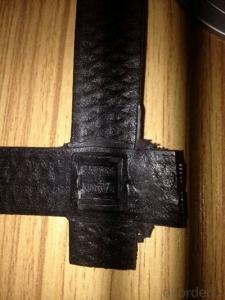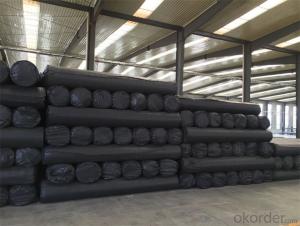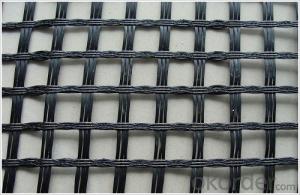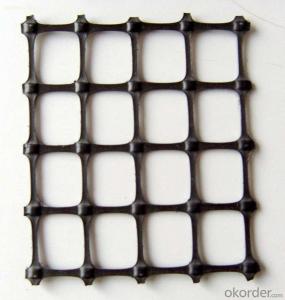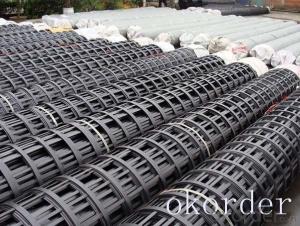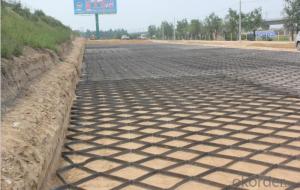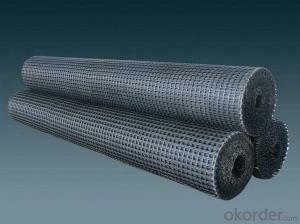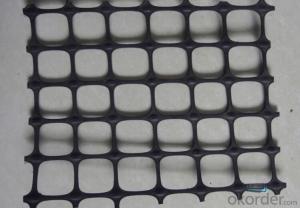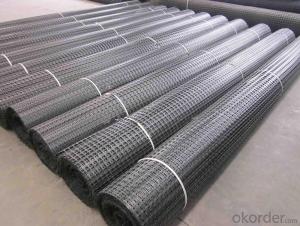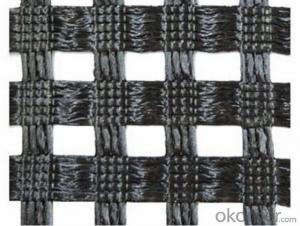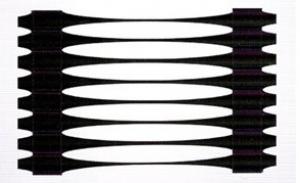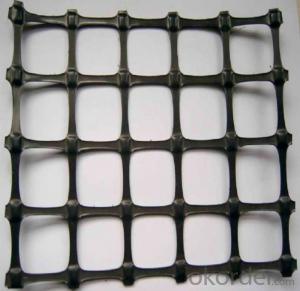Smooth Base Reinforcement Geogrids Geomembrane for Railway Tunnels
- Loading Port:
- Tianjin
- Payment Terms:
- TT OR LC
- Min Order Qty:
- 88 m²
- Supply Capability:
- 1800000 m²/month
OKorder Service Pledge
OKorder Financial Service
You Might Also Like
The description of Smooth Geomembrane with Straps for Tunnel
Made from extrusion technology with high strength straps evenly distributed on the surface,
Specification of Smooth Geomembrane with Straps for Tunnel:
I. Thickness: L. Omm- 3. Omm
2.2m- 4m in roll width, the length as client 's request
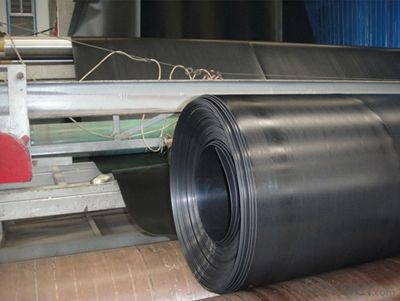
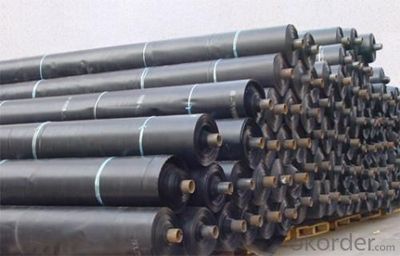
Feature or Property of Smooth Geomembrane with Straps for Tunnel:
I. Good flexibility
2. Excellent in waterproofing and separation, easy for construction
3. Resist to chemical erosion, hig h climate bearing ability
4. Could be suspension type hanging during construction without insert nails, increase laying
Quality and efficiency
Application of Smooth Geomembrane with Straps for Tunnel:
I. Tunnels of railway and highway
2. Subway projects
3. Basement of mineral and municipal projects
Production standard of Smooth Geomembrane with Straps for Tunnel:
GB18173.1-2012
Area |
|
Hydraulic | Lagooning and Water Treatment, Ornamental Ponds, Golf Courses Aquaculture and Desalination Water LagoonsTanks, Reservoirs, Liquid WasteFloating Cover SolutionsDrainage and FiltrationShading Cover Solutions |
Environment | Tailing ponds, Leach mining,Landfills,Landfill Capping,Protection against corrosion,Vertical Barriers |
Civil Works | Erosion Control, Secondary Containment, Tunnels,Linear and Surface Works,Consolidation of Margins,Soil Reinforcement,Soil Separation. |
Building | Parkings,Roofing,Soundproofing building |
Introduction of CNBM
China National Building Materials (Group) Corporation (CNBM) is a state-owned enterprise in charge of administrative affairs in China building materials industry. Established in 1984, CNBM is a large group corporation of building materials with total assets of RMB 25 billion and a total staff of 30,000. Now CNBM owns more than 200 subsidiaries in and abroad the country, including wholly-owned corporations and joint ventures.
FAQ of geosynthetics :
What is geosynthetics ?
Geosynthetics form a perfect erosion control fabric used extremely widely in civil engineering to stabilize and reinforce slopes and soil under or next to roads, railways, dams, water reservoirs etc.. They can be easily applied which minimizes the time of construction, as well as they limit the resources and materials necessary.
What kinds of geosynthetics we have ?
Non-woven geotextile, geogrids, geocells, GCL, Geomembranes, Geonets, Geocomposites etc .
What is the geosynthetics used for ?
Hydraulic
Lagooning and Water Treatment, Ornamental Ponds, Golf Courses
Aquaculture and Desalination,Water Lagoons,Tanks, Reservoirs, Liquid Waste,Floating Cover Solutions, Drainage and Filtration
Environment
Tailing ponds, Leach mining,Landfills,Landfill Capping,Protection against corrosion,Vertical Barriers
Civil Works
Erosion Control,Secondary Containment,Tunnels,Linear and Surface Works,Consolidation of Margins,Soil Reinforcement,Soil Separation.
Building - Parkings,Roofing,Soundproofing
- Q: Are geogrids suitable for use in cold climates?
- Yes, geogrids are suitable for use in cold climates. Geogrids are designed to withstand extreme weather conditions, including cold temperatures. They are made from materials that can resist freezing and maintain their structural integrity in cold environments. Additionally, geogrids are used for reinforcement and stabilization purposes in civil engineering projects, such as roads and retaining walls, in various climates worldwide, including cold regions.
- Q: Can geogrids be used in pipeline construction?
- Yes, geogrids can be used in pipeline construction. Geogrids are commonly used as reinforcement materials to improve the stability and strength of soil, and they can be effectively employed in pipeline construction to provide additional support and prevent soil erosion, enhancing the overall durability and longevity of the pipeline.
- Q: Can geogrids be used in stabilization of riverbanks?
- Yes, geogrids can be used in the stabilization of riverbanks. Geogrids are often used to reinforce and stabilize soil in various applications, including erosion control along riverbanks. Their high tensile strength and ability to distribute loads make them effective in preventing soil erosion and maintaining the stability of riverbanks.
- Q: How do geogrids improve the performance of geosynthetic tube structures?
- Geogrids improve the performance of geosynthetic tube structures by providing enhanced strength and stability. They act as a reinforcement element, distributing and transferring loads more efficiently across the structure. This reinforcement helps to mitigate potential deformations and structural failures, ultimately increasing the overall performance and longevity of the geosynthetic tube structures.
- Q: What is the difference between geogrids and geotextiles?
- Geogrids and geotextiles are both used in civil engineering and construction projects, but they have distinct differences in their design and function. Geogrids are typically made of high-strength polymer materials and have a grid-like structure, often resembling a net or mesh. They are primarily used to reinforce soil and provide stability to structures by distributing loads and reducing soil movement. Geogrids are commonly used in applications such as road and pavement construction, retaining walls, and slope stabilization. On the other hand, geotextiles are permeable fabrics made from synthetic fibers. They are designed to filter, separate, reinforce, or protect soil and other materials. Geotextiles can be woven or non-woven and are used for various purposes, including erosion control, drainage systems, filtration, and soil stabilization. They are often used in applications such as landscaping, erosion control blankets, and landfills. In summary, the main difference between geogrids and geotextiles lies in their structure and main function. Geogrids provide reinforcement and stability to soil and structures, while geotextiles are used for filtration, separation, and protection purposes.
- Q: Can geogrids be used in reinforcement of mechanically stabilized earth walls for bridge abutments?
- Yes, geogrids can indeed be used for reinforcement of mechanically stabilized earth walls for bridge abutments. Geogrids are commonly used in such applications as they provide additional tensile strength to the soil, improving its overall stability and preventing potential failure. By distributing and transferring loads, geogrids help increase the load-bearing capacity of the soil, making them an ideal choice for reinforcing mechanically stabilized earth walls used in bridge abutments.
- Q: Are geogrids easy to install?
- Yes, geogrids are relatively easy to install. They can be installed using simple tools and equipment, and the process generally involves unrolling the geogrid, securing it in place, and covering it with soil or aggregate material. However, the ease of installation can vary depending on the specific project and site conditions.
- Q: How do geogrids enhance the performance of geosynthetic clay liner capillary barriers?
- Geogrids enhance the performance of geosynthetic clay liner capillary barriers by providing additional reinforcement and stability to the liner. They help distribute loads more evenly, increase tensile strength, and reduce the potential for deformation or failure of the liner system. Additionally, geogrids assist in controlling lateral movement and prevent the loss of clay particles, ensuring better long-term performance and effectiveness of the capillary barrier.
- Q: Geogrid specification TGSG40-40 what meaning
- I would like to tell you about, TGSG40-40: biaxial tensile plastic geogrid, the vertical and horizontal strength indicators are not less than 40KN, to meet the national standards.
- Q: Do geogrids reduce the amount of fill material required?
- Yes, geogrids do reduce the amount of fill material required.
Send your message to us
Smooth Base Reinforcement Geogrids Geomembrane for Railway Tunnels
- Loading Port:
- Tianjin
- Payment Terms:
- TT OR LC
- Min Order Qty:
- 88 m²
- Supply Capability:
- 1800000 m²/month
OKorder Service Pledge
OKorder Financial Service
Similar products
Hot products
Hot Searches
Related keywords

